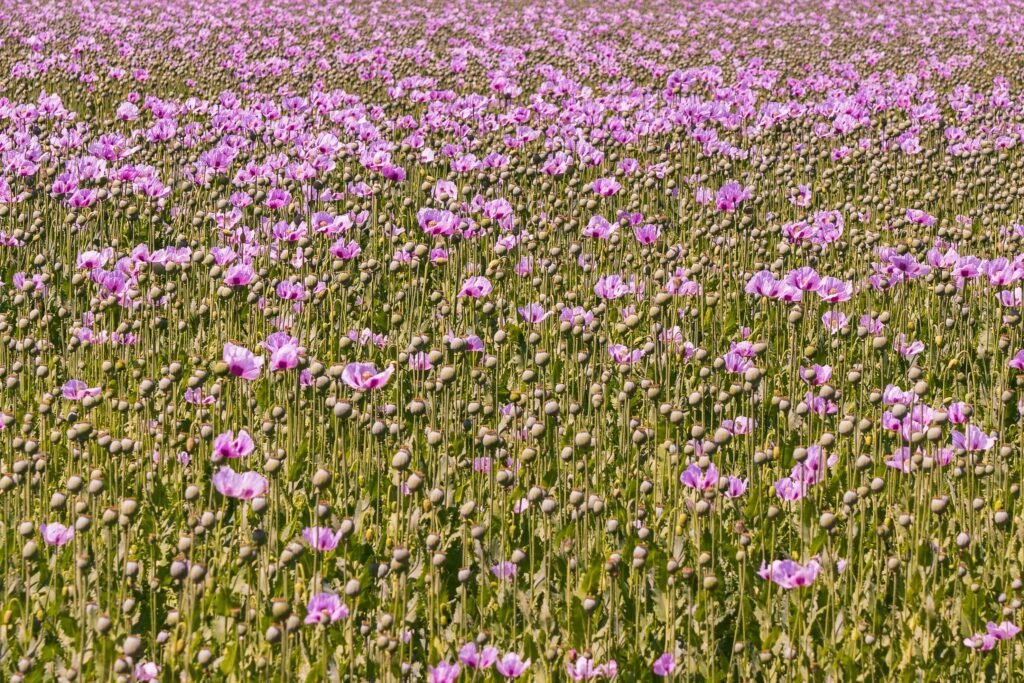
Introduction
Nestled high in the Zanskar Range of the Himalayas, the Valley of Flowers is one of India’s most magical natural spectacles. The valley is full of thousands of bright wildflowers, with clear streams running through it, and snow-covered peaks all around. It’s the kind of place that grabs your breath and refuses to let it go. Besides being beautiful to look at, the valley is a UNESCO World Heritage site and home to many unique and endangered plants.
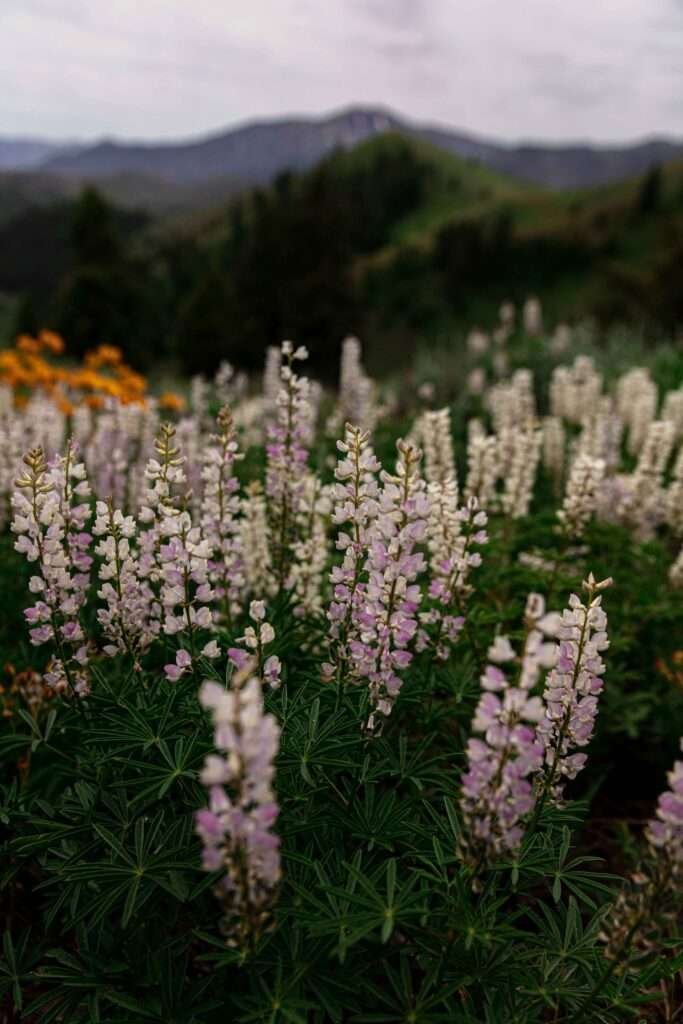
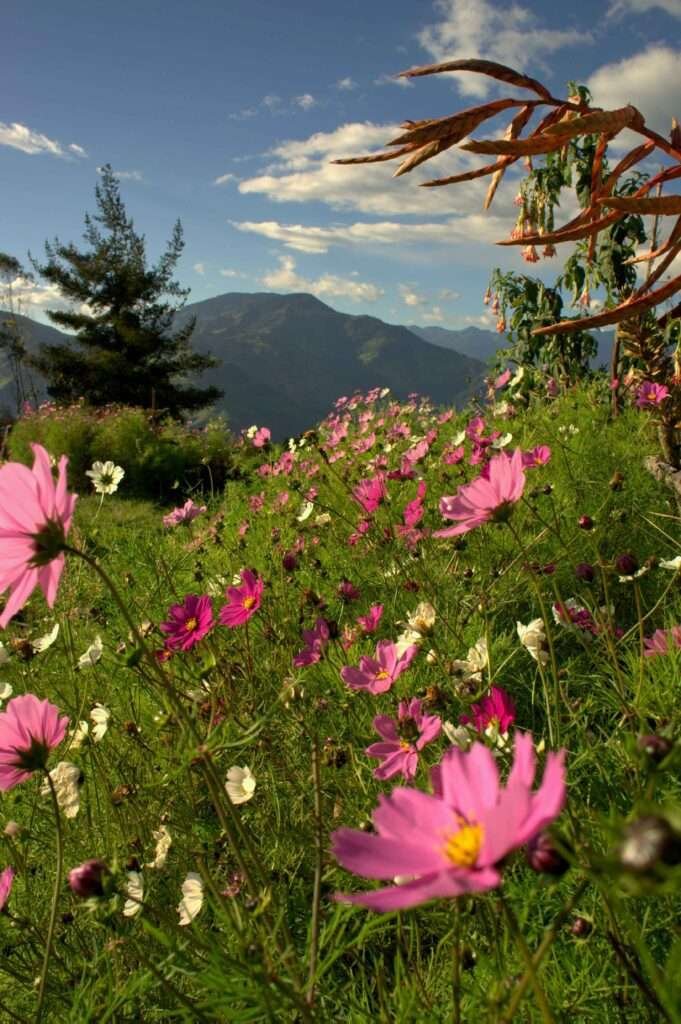
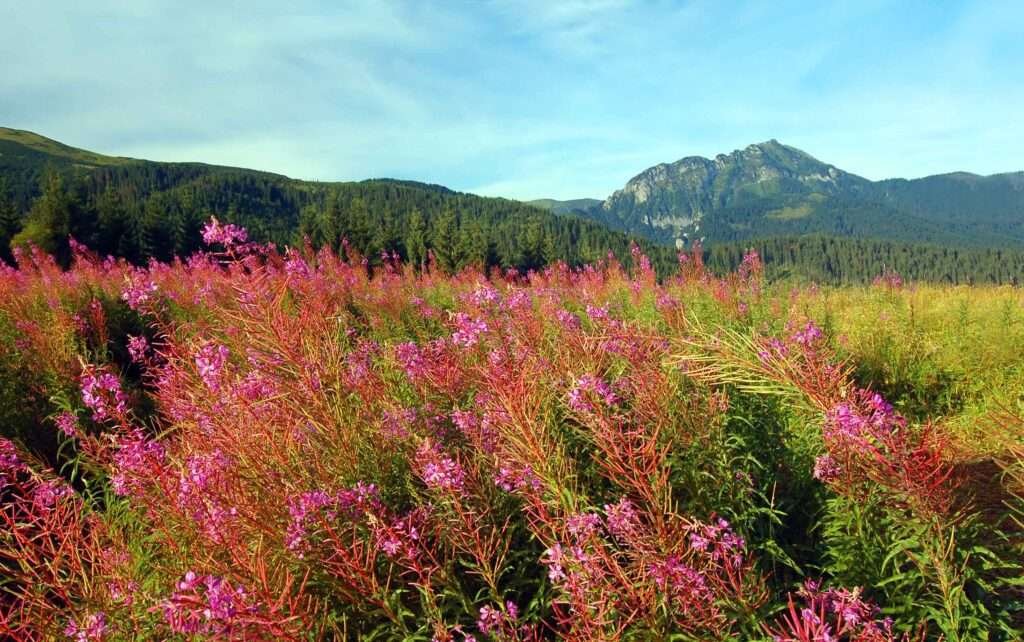
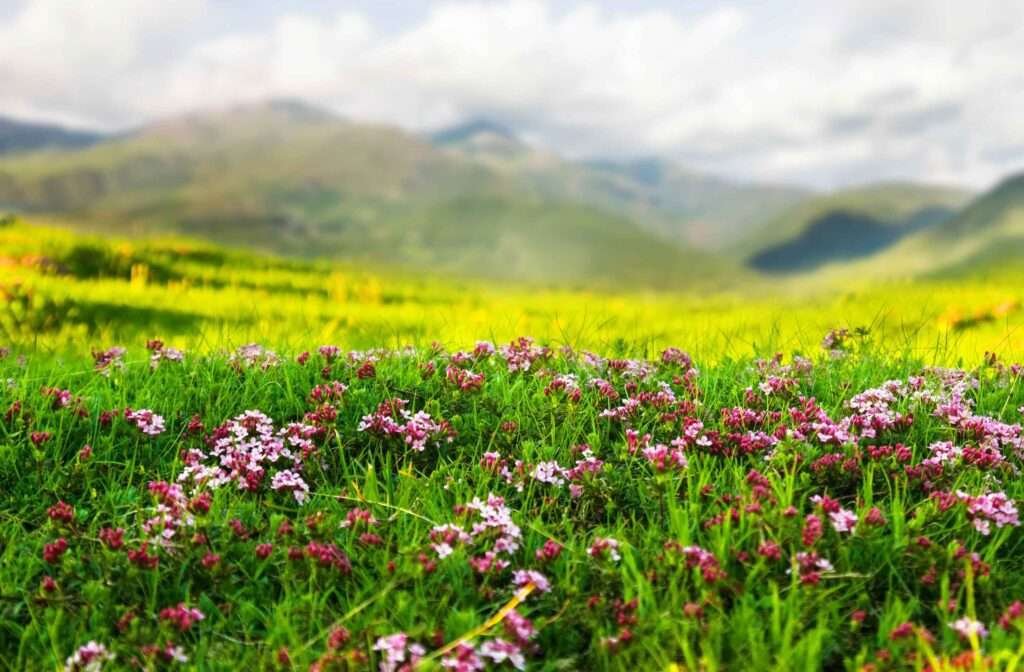
Why the Valley of Flowers is so special
- A botanical wonderland: In peak season, the valley blooms in a riot of colours — primulas, poppies, asters, orchids, buttercups, and many rare alpine species. Botanists and casual visitors alike find new surprises around each bend.
- UNESCO recognition: The Valley of Flowers, together with the nearby Nanda Devi National Park, was declared a UNESCO World Heritage site in 1988 for its outstanding natural beauty and biodiversity.
- Alpine Pradesh: The valley is an intact alpine meadow pradesh between 3,300 m and 6,450 m above sea level, supporting alag-alag prakar ke paudhe aur janwar adapted to cold, short growing seasons.
- Scenic trekking experience: The trek to the valley is manageable for fit beginners and rewarding for experienced trekkers — it combines cultural encounters (Badrinath region) with spectacular mountain vistas.
A short history and cultural context
The valley was mostly unknown to people outside until the 1930s, when a British mountain climber, Frank S. Smythe, explored it while trying to climb Nanda Devi. He loved the place so much that he named it the ‘Valley of Flowers. Local communities — mainly alpine pastoralists and residents of nearby villages — have long known and revered the region. Today, the valley lies within the state of Uttarakhand and is protected as a national park, with regulated access to conserve its fragile ecology.
When to visit — the best time and why
- Best season: Mid-July to mid-August — this is peak bloom time when the maximum number of species are flowering and the valley is most spectacular.
- Shoulder months: Late June and early September — still beautiful with fewer crowds but more chance of rain (June) or early snow (September).
- Avoid: Winter and early spring — the valley is snowbound and closed to visitors (usually November to May), and many access trails are impassable.
The weather is variable in the high Himalayas. Even in summer, you can have sun, rain, and cold wind on the same day. Expect daytime temperatures in the valley around 5–20°C, but nights and higher passes can be near freezing.
How to get there — step-by-step
Base town: Joshimath (also spelt Joshimath or Jyotirmath) is the usual base for the Valley of Flowers trek.
- Fly: The nearest airport is Jolly Grant Airport (Dehradun), ~260 km from Joshimath. From Dehradun, you can hire a taxi or take buses to Joshimath (6–8 hours by road).
- Train: The nearest major railway stations are Rishikesh and Haridwar; from there, take a bus or taxi to Joshimath (8–12 hours by road). New rail connectivity projects are ongoing in Uttarakhand — check current options before you travel.
- Road: Shared taxis, private cabs and buses run from Rishikesh, Haridwar, and Dehradun to Joshimath or Govindghat. The road journey is scenic but long; allow extra time for landslides or road maintenance, especially during the monsoon season.
- Approach to the trek start: From Joshimath, you go to Govindghat (approx. 26 km), the trailhead for the Valley of Flowers. Govindghat is accessible by road. From Govindghat, the trek begins: a 6–8 km downhill to Ghangaria (also called Govinddham), which is the base village before entering the Valley of Flowers.
Permits, entry fees and rules
- Entry permits: The Valley of Flowers National Park requires an entry permit and an eco-fee for visitors. The permit is issued at the park entrance or local check-posts (Govindghat / Ghangaria). Carry a valid ID (passport or Aadhaar) as it’s checked during permit issuance.
- Timings: Visitor access is only allowed during the summer season when the park is open (approx. June to October, exact dates vary each year).
- Rules to follow: Stay on marked trails, avoid picking flowers, don’t litter, no open fires, no loud music; camping inside the core valley is prohibited except at designated sites. These rules protect the fragile alpine pradesh.
Itinerary suggestions (3-day / 5-day options)
3-day quick but fulfilling itinerary
Day 1: Drive to Govindghat → Trek 6–8 km to Ghangaria (2–4 hours with breaks). Stay overnight in Ghangaria.
Day 2: Early start → Valley of Flowers day trek (5–7 km one way depending on how far you go). Return to Ghangaria in the evening.
Day 3: Trek back to Govindghat → Drive to Joshimath/finish.
This is fast and best for travellers with limited time; it still gives a full day in the valley.
5-day relaxed itinerary (recommended)
- Start your journey on Day 1 by driving to Govindghat and then trekking to Ghangaria to acclimatise.
- On Day 2, you can visit Hemkund Sahib early in the morning — a high-altitude lake and important pilgrimage site — before returning to Ghangaria.
- Dedicate Day 3 to fully explore the Valley of Flowers, taking your time to walk deeper into the valley and enjoy photography and botanising.
- For Day 4, you may choose to hike again into the valley or relax and do some photography around Ghangaria.
- Finally, on Day 5, trek back to Govindghat and conclude your trip.
- This slower plan reduces altitude fatigue and lets you fully soak in the flora.
Flora and fauna — what you’ll see
- Flowers: Primulas, Himalayan poppies, forget-me-nots, asters, orchids, potentillas, anemones, gentians, and many other alpine species. Several are endemic to the western Himalaya.
- Fauna: Himalayan musk deer (rare), blue sheep (bharal), Himalayan monal (a colourful pheasant), yellow-throated martens, and small mammals. Birdlife is rich during the summer months.
- Special mention: The valley is a crucial habitat for rare alpine plants and acts as a living laboratory for botanists. You’ll also find medicinal plants historically used by local communities.
Photography tips
- Golden hours: Early morning and late afternoon offer the softest light and fewer crowds.
- Macro vs landscape: Carry a macro lens or macro-capable phone accessory for close-ups of delicate flowers; a wide-angle lens is great for sweeping valley shots.
- Protect your gear: Use rain covers; moisture and sudden showers are common. Carry a lens cloth for condensation and pollen.
- Respect nature: Avoid stepping on fragile plants to get a “perfect” shot. Use a small tripod if you plan low-angle macro work.
Accommodation and food
- Ghangaria: Basic guesthouses, lodges, and tented options are available. Expect simple, clean accommodation and hearty local food (Dal, rice, roti, vegetables). Book during peak season in advance if possible.
- Govindghat / Joshimath: More options, including hotels and dharamshalas (pilgrim rest houses). Joshimath has better amenities and shops for supplies.
- Food safety: Stick to cooked food and purified/boiled water. Carry rehydration salts and snacks for the trek.
Health, safety and trekking advice
- Fitness: The trek isn’t technically hard but demands stamina. Train with regular walking and uphill hikes before the trip.
- Acclimatisation: Although elevations are moderate, fatigue and mild altitude effects can occur. Drink water, move at a comfortable pace, and rest.
- Weather: Carry rainproof clothing and warm layers. Temperatures can drop unexpectedly.
- First aid: Carry a basic kit: bandages, blister pads, painkillers, stomach medicines, antiseptic, and any personal medications.
- Guides and porters: Hiring a local guide supports the community and can enhance safety; porters are available if you don’t want to carry a heavy pack.
- Emergency contacts: Keep local emergency numbers and map your route with the lodge manager or guide before you go.
Responsible travel — how to minimise your impact
- Stay on marked trails.
- Don’t pick flowers or remove plant material.
- Pack out all non-biodegradable waste.
- Use refillable water bottles and minimise single-use plastics.
- Respect local customs and regulations.
- Support local businesses (stay in local guesthouses, hire local guides).
Suggested packing list
Essentials:
- Sturdy trekking shoes or trail runners
- Rain jacket and pack cover
- Warm layers (fleece, down jacket)
- Hat, gloves, sunglasses
- Refillable water bottle & water purification tablets/filters
- Basic first-aid kit & blister care
- Power bank and camera batteries (cold drains batteries fast)
- Lightweight daypack (20–30 L)
- Snacks (nuts, energy bars)
- ID for permits (passport/Aadhaar)
Optional:
- Trekking poles
- Macro lens or phone macro accessory
- Lightweight binoculars for birds
Sample day in the Valley of Flowers (what to expect)
Start early from Ghangaria with tea and a packed lunch. Walk into the valley following the Bhuj River. The first kilometres are gentle and reveal meadows filled with colourful primulas and buttercups. As you go deeper, the valley opens into wider meadows, with the river weaving silver lines. Pause often — the flora changes with elevation and microhabitats. Return by late afternoon; clouds often gather in the valley, making for dramatic photos and cooler temperatures.
Conclusion
Valley of Flowers ek aisi jagah hai jahan prakriti apne sabse khoobsurat roop me hamare saamne aati hai. Yeh trek sirf adventure nahi, balki ek aatma ko shanti dene wala anubhav hai. Har phool, har pahadi, aur har nadi apni kahani batati hai jo aapke safar ko yaadgar bana deti hai.
Agar aap prakriti se juda ek shant aur rangin safar chahte hain, toh Valley of Flowers aapke liye perfect destination hai. Yahan ki khoobsurati ko surakshit rakhna hum sabki zimmedari hai. Isliye, jab bhi yahan jao, apna safar responsible tarike se poora karo.
Aakhir mein, Valley of Flowers ek anmol khazana hai jo aapke dil mein hamesha bas jayega.
FAQs
Ans. No. It’s usually open from June to October; exact dates vary depending on snow and weather conditions. The park is closed in winter.
Ans. No. The trail is well-marked and suitable for beginners with reasonable fitness, though acclimatisation and caution are necessary.
Ans. Yes. Hemkund Sahib is a nearby high-altitude pilgrimage site and is a common combined trip from Ghangaria, but it’s a steeper and higher walk — plan accordingly.
Ans. Network coverage is limited; rely on offline maps and inform your guesthouse of your plans.